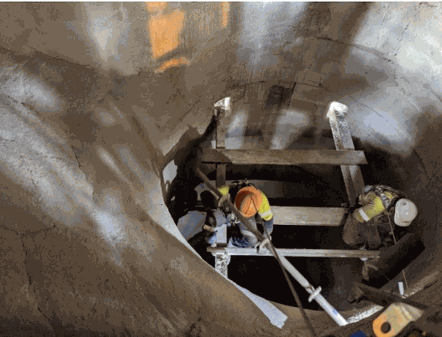HRS’s efforts at the recent shutdowns were extraordinary by any measure, not least from a HSEQ perspective. Not only did HRS achieve all their operational targets, but the work was achieved with commendable focus on Health and Safety.
Shutdowns by their very nature introduce a number of risks over and above normal operation that need to be managed. Even for crews used to the operating environment of a particular site, there will be unfamiliar risks introduced into the workplace under shut down conditions. As well as specific risks for a site there will be multiple work groups working in close proximity to each other. Unless clear communication is established, preferably by formal risk assessments, workers can be exposed to risks inherent in other work groups work. Examples vary and are not limited to:- falling under the shadow of a load, falling objects, dust dislodged, housekeeping from activities of others to name a few. We cannot assume that other workgroups have the same Health and Safety Culture as HRS, nor that they understand our work requirements.

It is critical to Health & Safety during a shutdown that all involved recognise risks introduced into the workplace. This applies to all parties, and at times necessitates taking a step back and recognising all elements of a job or work environment. Taking this time will result in ensuring that risks identified are controlled appropriately. For example, engaging with other work groups, putting in place Safe Work Methods, or Job Hazard Analysis that alert your workgroup to unique risks.
Due to the work environment during a shutdown, the Shut Down managers will always place an extra emphasis on Health & Safety and may well introduce more stringent rules than during normal operation. Other than unfamiliar risks, and multiple workgroups, other risks such as pressure to complete tasks in a certain time frame will exist or be perceived and working with new people in your workgroup is likely. It is likely that crews will work longer shifts, therefore fatigue and exposure to risks such as heat stress must be considered. Proactively managing rest during shifts, and appropriate days off are essential. It is critical that HRS demonstrate compliance to the Health & Safety Requirements specified by the client. Compliance to such requirements provide confidence that HRS is managing risks proactively, and reflects directly on our credibility, and reputation i.e. ability to secure further work. It is important to note that in the event that workplace incidents occur, that they are promptly reported, and work stopped until a thorough investigation is conducted. The HRS Investigation will analyse the incident, determine the root causes, and then define an action plan to address the root causes. It cannot be stressed enough that you ensure all incidents are reported as soon as they occur. Reporting an Incident regarded as a positive action.

During a shutdown there are always learnings identified during what is an intense environment. Any learnings, whether they be risks, better tooling/ppe, sequence of tasks, rescue plans, controls, etc, please take the time to report / discuss with your supervisor, or HSEQ Leader. As an example during the recent shutdowns, learnings from the Shutdown were documented in seven categories:- Unique Hazards, New Equipment to consider, Clarity Pre Shut, Build into HRS Systems, Improvements, Emphasise from learnings, What worked well.